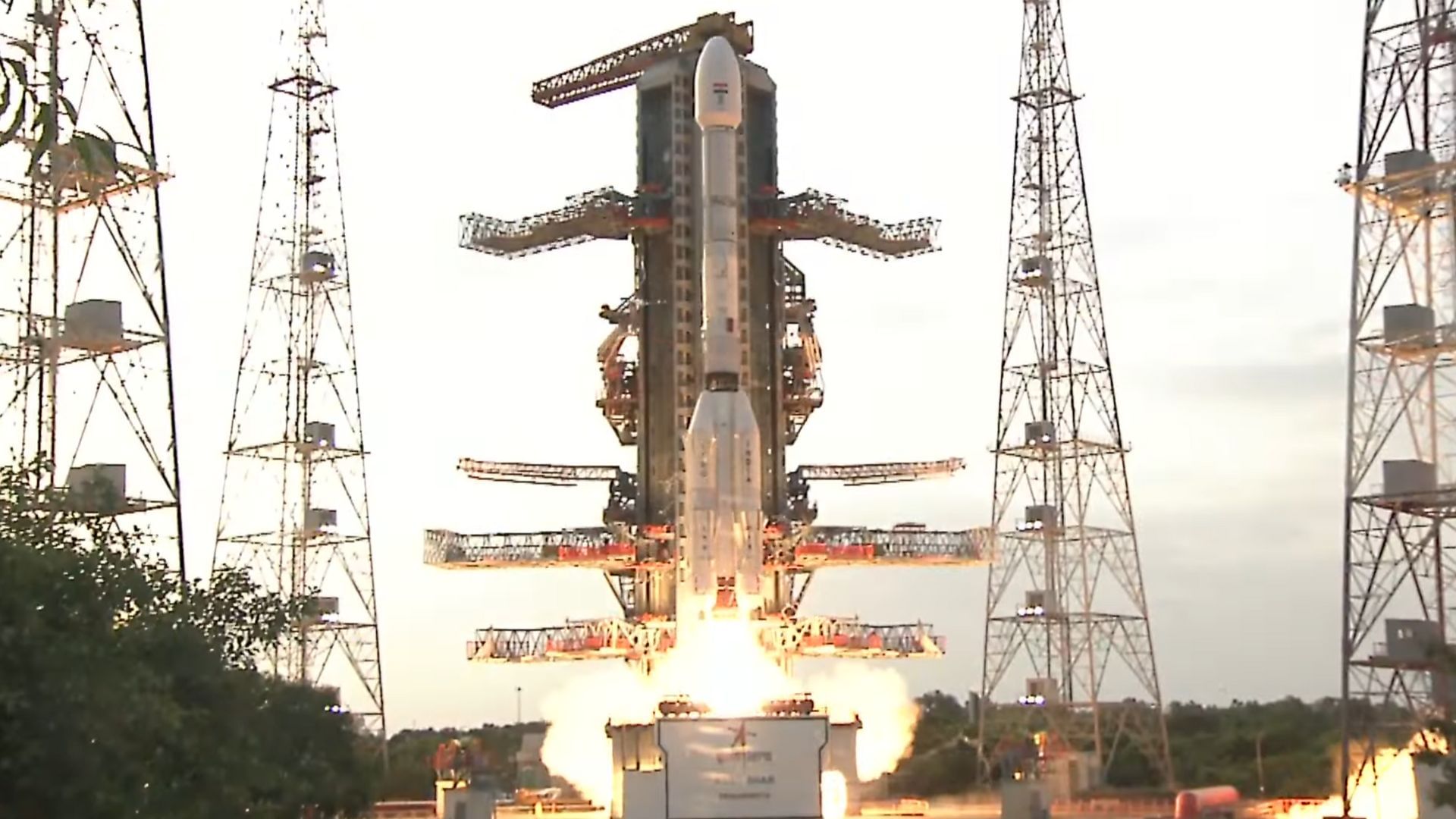New Delhi: ISRO’s GSLV-F16 rocket has successfully lifted off from the second launch pad (SLP) at the Satish Dhawan Space Centre (SDSC) in the Sriharikota High Altitude Range (SHAR), ISRO’s only operational spaceport on the barrier island of Sriharikota. The only payload on board is the NASA-ISRO Synthetic Aperture Radar (NISAR) satellite, the first collaboration of its kind between NASA’s Jet Propulsion Laboratory (JPL) in California and ISRO’s Space Applications Centre (SAC) in Ahmedabad. ISRO has provided the spacecraft bus, the S-band radar payload, and solar panels for the satellite, while NASA has provided the L-band radar payload, the nine metre long boom, and the 12 metre wide radar reflector antenna.

The NISAR satellite being enclosed in the payload fairing. (Image Credit: ISRO).
The satellite will be injected into Earth orbit at an altitude of 745 kilometres about 18 minutes into the flight. This was the 102nd flight from Sriharikota, the 18th mission of the GSLV, and the 12th to fly with the indigenously debeloped cryogenic upper stage. This is the first time that a GSLV rocket is injecting a satellite into a Sun Synchronous Polar Orbit (SSPO). The unique dual-band SAR uses a novel SweepSAR technology developed by JPL that allows for a wide area coverage without compromising on fine spatial resolution. The satellite will be capable of covering the entire surface of the Earth every 12 days.
Goals of the NISAR mission
The NISAR mission is the most sensitive and expensive Earth observation satellite ever deployed, and can measure centimetre-scale deformations in the surface of the Earth. The primary goals of the mission is to study land and ice deformation and movement, land ecosystems and oceanic regions that are of common interest to the US and Indian science communities. The data from the mission will be made available to the general public by both NASA and ISRO. ISRO will be releasing the data through its Bhoonidhi geoinformatics portal, while NASA is using Amazon Web Services cloud infrastructure to process and distribute the data from the mission. NISAR is an Earth observation satellite with unprecedented capabilities, and it is likely that the data will be used for novel applications that no one has imagined.
